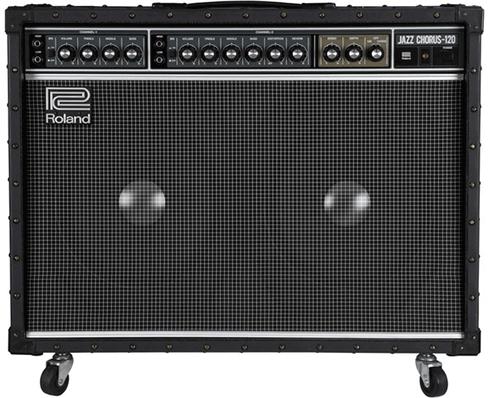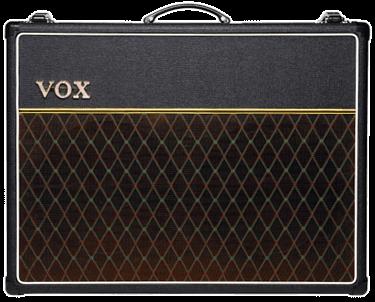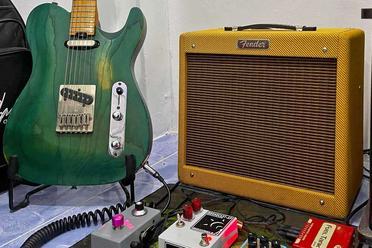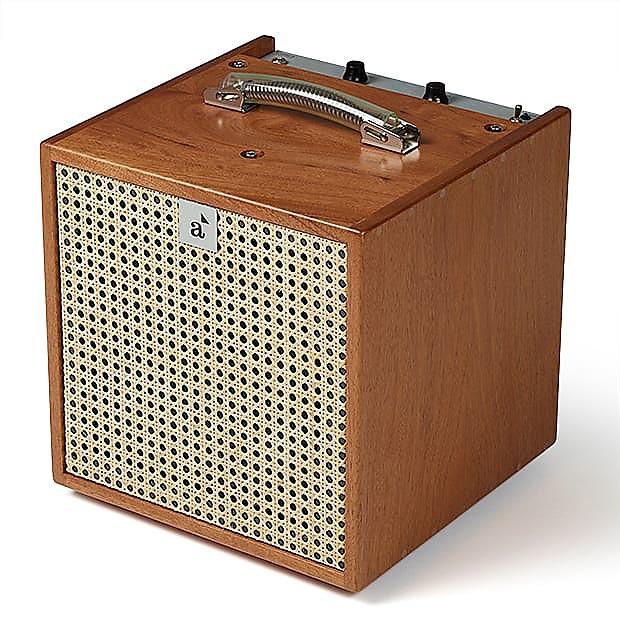Imagine standing in a dimly lit club, losing yourself within a symphony of strings, your jazz guitar singing like a nightingale while the crowd leans in, enchanted. That’s the magic a perfect jazz guitar amp can weave. It happened to me, on a rustic stage in New Orleans, where I first felt the profound shift in my music, thanks to a seemingly humble companion – a jazz amp.
As a seasoned guitarist with echoes of Mel Bay and Bill Frisell in my chords, and as someone who had the honor of honing his craft at the revered New England Conservatory, I can tell you that the search for the ‘ultimate jazz tone’ is a never-ending saga – a jazz improv of its own kind. Curating those perfect amp recommendations for jazz guitarists has been akin to composing a harmonic masterpiece.
Here’s the thing: I believe the right amplifier doesn’t just support your jazz guitar. It breathes life into it. It captures the soul of your music and magnifies it, embellishing it with unique tonal hues. Whether you’re a Strayhorn at heart or have Django’s ‘Hot Club’ pulsating through your veins, the right jazz guitar amp can be your wand, and you could weave sonic landscapes unheard of.
But, finding that elusive amp can feel like chasing a ghost. Fear not; I’ve spent countless nights strumming, tuning, and testing. It’s time to share that knowledge and help you on your journey to find your perfect tone. Let’s colour the world with more jazz, one amp at a time.
Top-Rated Jazz Guitar Amps
| Amplifier | Type | Power Output | Speaker Size | Channels | Weight | Notable Features |
|---|---|---|---|---|---|---|
| Fender Twin Reverb | Tube | 85 Watts | 2×12″ | 2 | 64 lbs | Vintage design, Reverb & Vibrato, Bright switch |
| Roland JC-120 Jazz Chorus | Solid State | 120 Watts | 2×12″ | 2 | 62 lbs | Stereo chorus, Distinct clean tone, Durable build |
| Vox AC30 | Tube | 30 Watts | 2×12″ | 2 | 70.99 lbs | Top Boost channel, Tremolo, Reverb |
| Henriksen The Bud | Solid State | 120 Watts | 1×6.5″ | 2 | 17 lbs | Lightweight & Portable, Bluetooth, Onboard EQ |
Fender Twin Reverb
Best for Classic Tube Warmth

Striving for the ultimate jazz tone takes one on a journey of exploration, and in my adventures, I’ve been repeatedly drawn to the Fender Twin Reverb, a top-rated jazz guitar amp with an unrivalled classic tube warmth. The hallmark of my countless jam sessions and the foundation of many revered jazz recordings, this Fender jazz amp exudes a resonating warmth that offers a comforting respite from the sharp edges of contemporary jazz.
So many times, I’ve been drawn to the intimate familiarity of its rich, golden tone. One particular memory stands out, during an impromptuous late-night jam session when we, a group of dedicated jazz players, switched on this tube amp for jazz. The Fender Twin Reverb’s warm sound instantly filled the room, transforming our random musical musings into a cohesive jazz soundscape. In that comforting glow of sound and connectivity, we experienced firsthand why it remains a preferred choice in the realm of jazz amplification.
But every product has its pros and cons, and this Fender jazz amp is no exception.
Pros:
- This tube amp for jazz offers an immersive warmth and rich tonality unmatched in its category.
- The Fender Twin Reverb is reliable, with a robust build quality that ensures longevity.
Cons:
- The amp’s substantial weight can limit its portability.
- Some may find its price tag a bit steep, but it’s an investment worth making for its distinctive tone and durability.
Comparatively, the Roland JC-120 Jazz Chorus offers pristine clean tones and the Vox AC30 serves up a grittier sound, while the Henriksen The Bud’s compact size makes it an ideal travel companion. Each has its unique strengths, but for the quintessential jazz warmth and authenticity, the Fender Twin Reverb undoubtedly holds its ground. A faithful companion in my musical journey, the Twin Reverb faithfully delivers the warmth, depth, and richness that, for me, is at the very heart of jazz.
Roland JC-120 Jazz Chorus
Best for Clean Sound Projection

Transcending my experience of tube amps’ nuance and warmth, I’ve found the Roland JC-120 Jazz Chorus to be a revelation in the jazz amplifier domain. This solid-state marvel is a serious contender among the top-rated jazz guitar amplifiers. Not only does it command respect in the lineage of Roland Jazz Chorus models, but it also underscores a defining truth – superb jazz tones aren’t exclusively the domain of tube amplifiers.
An instance that encapsulated my newfound appreciation was during an intimate jazz ensemble performance. Entrusted with the rhythm section, my trusty Gibson hollow body paired with the JC-120 delivery was enigmatic. The amplifier’s clean sound projection filled the space with jazz nuances that reflected a blend of ripe sophistication and modern audacity.
The JC-120’s contribution to solid-state amp jazz comes alive with an uncanny clarity that positions each note distinctively. Unlike its valve-powered cousins – Fender Twin Reverb or Vox AC30, the JC-120 excels in providing a rounded, clean tone avoiding any unnecessary distortions.
Pros:
- Amazing clean sounds with unmatchable brightness and clarity
- Impressive stereo chorus effect cherished by many professionals
Cons:
- Not ideal for overdriven or distorted sounds
- Slightly bulky and heavy for its class
Though Henriksen The Bud presents a portable option for diverse jazz sounds, the depth and character that JC-120 lends to your sound is irreplaceable. Nevertheless, each amplifier brings uniqueness to the table, and one’s selection should resonate with their sonic needs and preferences.
Rooted in personalized experiences and shared knowledge, the Roland JC-120 Jazz Chorus lives up to the expectation of a top-rated jazz guitar amp by exemplifying the fusion of tradition, simplicity, and innovation. It echoes my belief that the tone’s authentic feel and transparency garner more significance than the amplifier’s construction. Thus, offering an equal footing in this amp showdown between tube and solid-state champs.
Vox AC30
Best for Versatile Tone Shaping

The ‘Vox AC30’, a classic jazz amp to its core, is truly deserving of its spot in the ‘Top-Rated Jazz Guitar Amps’ list. Reminiscing through my countless gigs and articles, I am reminded of its adaptability and versatility, much like the harmonic choices outlined in my book ‘Color Your Chords.’
The first time I plugged my guitar into the Vox amp for jazz, the difference was palpable. The AC30 instantly drew out the smooth jazz tone, saturating the room with warmth. Its remarkable tone-shaping abilities cater to every subtle nuance, helping you stand out in any gig. It echoed a perfect balance between brightness and warmth, rendering the quintessential jazz texture effortlessly.
Comparing it with the Fender Twin Reverb and Roland JC-120 Jazz Chorus, the AC30 uncompromisingly holds a unique edge. Unlike the Twin Reverb’s clean rigidity, the AC30 provides a certain malleability in sculpting sound. And though the JC-120 boasts a distinct chorus effect, the AC30’s tone control delivers a broader tonality spectrum.
Pros:
- Offers superior versatility in tone shaping.
- Delivers a unique blend of warm and bright tones.
Cons:
- Lacks the built-in chorus effect of JC-120.
- Not as rigidly clean as the Twin Reverb.
In conclusion, the Vox AC30’s distinguishing contribution lies in its versatility, broad tonal spectrum, and adaptability. Its capacity to mesh with different sound environments easily slots it among top-rated jazz guitar amps – a sound choice for any jazz enthusiast aiming to color their chords with a chameleon-like versatility. As we move to discuss ‘Henriksen The Bud’, we’ll see how these amps compare and what makes each one ideal for its purpose.
Henriksen The Bud
Best for Portability and Acoustic Performance

As an experienced jazz guitarist, I’ve found that ‘Henriksen The Bud’ is a brilliant blend of portability and acoustic performance. In all of my intimate gigs, it has proven to be the best small jazz guitar amp for producing the rich, soulful tones inherent in jazz.
When playing in smaller, cozy venues, the size and volume of an amp are crucial. Thankfully, Henriksen The Bud proves that size does not imply compromised performance. Despite the compact size, it delivers powerful and clear sound. The detailed acoustic amp research and engineering that went into this product are evident from the first strum.
One particular show I played at a local coffeehouse was a testimony to the power packed in this small package. I was able to truly capture the heart of jazz with great tonal balance and projection, despite the hustle and bustle around me. My colleagues were amazed to hear such captivating tones, resonating beautifully, all from Henriksen The Bud.
However, when compared with powerhouses like the Fender Twin Reverb or Vox AC30, The Bud falls short at higher volumes, typical of smaller amps. Yet, its superior portability and amazing acoustic performance prevail. With the Roland JC-120 Jazz Chorus, equally versatile, The Bud impresses with its more organic and authentic sound response.
Pros:
- Excellent portability, perfect for intimate gigs.
- Stunning acoustic performance from a small package.
Cons:
- Limited volume capacity compared to larger amps.
- Shortcomings can be noticeable in larger venue performances.
In the realm of top-rated jazz guitar amps, Henriksen The Bud wonderfully corresponds to the requirement of portability combined with clear-cut acoustic performance. Its limitations are nuanced, serving specific needs in a way that contributes uniquely to the diversity of jazz guitar amps available for discerning musicians.
Key Features to Consider

I often find myself contemplating the magic of jazz guitar amps. As a seasoned veteran in the world of music equipment and theory, the enchanting whispers of electric tones that emanate from these devices never cease to astound me. Jazz guitar amp settings—the way they contribute to the overall structure of the sound—are reminiscent of the soulful strokes of the plectrum grazing over the strings. It’s all interconnected, a composition of its own. This is especially true when you’re dealing with the tone for jazz, known for its sophisticated, complex, and inviting nature.
Narrating my insights on jazz amps and their features, I’m reminded of a phrase that often catches the eye of the intrigued jazz guitarist: “Imagine dialing in a jazz guitar tone so divine, it transcends mere sound. What if the secret lay within a few key features of your amp?” It’s not all about the guitar. The amp setting you choose can transform your guitar’s raw voice into an exquisite symphony that the audience cannot resist.
As an editor and educator, I’ve come to understand that the features of an amp are much like the elements of music theory. They must work harmoniously to create a sound that’s both practical for the player and pleasing to the audience. My aim is to guide you through these crucial choices.
Power—the first thing to consider while exploring jazz guitar amp options. Too little will hamper your performance, too much could overwhelm the subtle details of your play. A 15 to 30 watts amp typically delivers the right balance for jazz, offering a warm and detailed sound without overpowering the smooth, sophisticated character of the genre.
Tone controls determine the amp’s capability to shape your guitar’s raw sound. Aim for balance; an amp with separate controls for bass, mid, and treble frequencies offers versatility without overwhelming complexity. This complements the dynamic nature of jazz where tonal variation plays a significant role.
As for the types of amps, there are tube amps known for their warm and dynamic tone, and solid-state amps that deliver a clean, crisp and consistent output. This is where knowing your personal preferences becomes essential. If you are a fan of the rich, vintage tone, you might find a tube amp more appealing. Conversely, if you find beauty in consistency and clarity, a solid-state amp, such as the renowned Roland JC-120 Jazz Chorus, could be your pick.
It’s important to acknowledge that this isn’t a comprehensive list of all the features to consider. It’s just a start, an introduction to the world of jazz tone and the crucial role that the features of a guitar amp play. My advice? Be respectful yet challenging of your guitar’s voice. Embrace the tools that allow you to enhance, not change it. Recognize the value in the features that enhance your interaction with the instrument.
Embracing and understanding these key elements of your jazz guitar amp can give you the power and the creative freedom to experiment, can allow you to transcend the audience’s expectations, to create stories with your music that are as emotional as they are captivating. It can help you muster the courage to wrestle with complexity, to truly immerse yourself in your music and, at the end of the day, to feel something magical, something that indeed transcends sound.
Understanding the Jazz Tone

If I were to personify my journey with jazz, I’d call it a passionate affair. Right from the threshold, being welcomed by the warm, husky voice of this genre, the attraction was immediate. Now, after years of sweet symbiosis, the essence of jazz and I have intertwined to a point where I still remain fascinated with its whims and subtleties. This relationship’s soundtrack? The elusive yet beautiful jazz tone – that mellow, often smoky sound that becomes emblematic of your playing style and personality.
As a player and producer, I’ve cast around in sound and space for an understanding of this element. It’s been a thrilling, convoluted journey, ripe with discovery and leaps of understanding. And as I peer from this vantage point of experience and expertise, I see clearly the vital role the electric jazz guitar amp plays to synthesize the perfect jazz tone.
Indeed, for every enthusiast, the quest for the perfect jazz tone is like searching for the Holy Grail. But what makes this tonal quest so incredibly fascinating and complex? It ties back to understanding that the tone isn’t an isolated, monolithic concept; it’s a dynamic alloy of factors and perceptions. As I’ve accidently stumbled on, and deliberately sought, I’ve come to appreciate the intricate dance between the guitar and the amp, where the melody and tonality are the musicians and improvisation is the dance.
One of the most instrumental experiences for me was realizing that my jazz guitar amp tone was a response – it reacted to my touch, the instrument, the environment, and above all, my intent. This is where the interplay between your guitar and your amp becomes crucial. In my sonic exploration, I’ve burrowed into the world of guitar amps, from the vintage stalwarts to the modern powerhouses, each one apt for particular subtleties; some adding a clean, bright twang while others deep, resonating growls. Understanding the jazz tone is about syncing with your instrument and your amp, establishing a complex, rich tonal palette, and pulling the right strings at the right time.
Reflecting on what I’ve learned, shared, and experienced, I can affirm that there isn’t a universally perfect tone- a confounding yet beautiful fact. Your jazz tone encapsulates not only the electric jazz guitar amp you’re plugged into but also how you’ve honed your musical sensibilities, your touch, your interplay with your jazz guitar amp. It’s your identity, enigmatic and powerful. The world of jazz guitar amps is full of potential allies, each with a singular voice. With understanding and experimentation, you’ll create a symphony that is distinctly yours.
As we delve deeper into this topic with our selection of top-rated jazz guitar amps in the subsequent sections, bear in mind the essence of this tonal quest. It’s not just about the ‘right pick’; it’s about the journey towards discovering, understanding, and refining your unique jazz tone. So, wear your curiosity like a second skin, let’s dive deeper on a trip down the audible lane, exploring the interplay between you, your guitar, and your amp.
Affordable vs. Luxury Amps

As I recall countless sessions, workshops, and gigs from over the years, I often find myself deep in the debate over the pursuit of the perfect jazz tone. Does it belong to the realm of high-end luxury amps, or can it be found within the circuits of an affordable jazz guitar amp? The essence of my decade spent in this sound universe is reflected in the realization: An artist’s budget should never limit their expression. Only through personal experimentation can one truly discover what kind of amp best suits their style and priorities.
In my gear reviews and workshop sessions, I’ve come across a wide spectrum of amps, each with their unique tonal flavor. While some musicians might find their perfect match in the creamy and pure tones of luxury jazz guitar amp, others might resonate more with the raw and gritty stamp of an affordable jazz fixture. Regardless of your leaning, it’s important to know that a higher price tag does not necessarily dictate a richer tone.
In the symphony of jazz guitar, does the melody of affordability resonate as richly as that of luxury? Let’s explore the value of amps across budgets. Luxury amps, such as the Fender Twin Reverb and the Roland JC-120 Jazz Chorus, boast precision of tone and unparalleled sound quality. However, they also come with a weighty price tag that can be out of reach for many. If you’re a jazz guitarist with a bigger budget, investing in a high-quality luxury amp can be an excellent choice. Yet it’s essential not to overlook the immense value that affordable amps can offer to musicians on tighter budgets or those just delving into the intricate world of jazz guitar.
Whether it’s the Vox AC30’s versatile harmonics or Henriksen The Bud’s clean-sounding punch, I’ve experienced firsthand the impressive tone and performance that many affordable amps can deliver. You might have to dig a little deeper, but with dedication, it’s possible to find an affordable jazz guitar amp that fits your jazz tone dreams and doesn’t break the bank.
Nurturing your musicality doesn’t always mean choosing the most expensive equipment. It’s about choosing what personally empowers your sonic expression, bound by neither presumptions nor price. My encounters with both ends of the spectrum have convinced me that the magic isn’t bound to merely luxury or affordability. It lies where your passion for your craft gets amplified the most.
Whether affordable or luxury, remember that your ultimate jazz tone is a personal journey, distinct and defining at every note, every strum. To fully embrace this adventure, explore without inhibitions—value and luxury, affordable and high-priced, raw passion, and refined performance. Be open to the wonders of perfecting your sound. After all, in music, the heart echoes louder than any amp ever could.
FAQs
What factors should I consider when buying a Jazz guitar amp?
When purchasing a Jazz guitar amp, consider factors such as its tone, power rating, size, portability, and available onboard effects. Price is another factor to keep in mind. Remember, the ultimate goal is to find an amp that can deliver a clean, warm, and rounded Jazz tone that you feel comfortable playing with.
What are some of the top Jazz guitar amps on the market?
Some of the top Jazz guitar amps include the Roland JC-120 Jazz Chorus, Fender ’65 Deluxe Reverb, and the Henriksen Jazz Amp. Other favorites amongst jazz guitarists are the Polytone amps and the DV Mark Little Jazz. These amps are known for their ability to produce excellent clean tones, essential for Jazz music.
Why is the Roland JC-120 Jazz Chorus considered a good Jazz amp?
The Roland JC-120 Jazz Chorus is a legend in the world of Jazz guitar amps. The amp is renowned for its clean tone and the distinct chorus effect. Two independent power amps in the JC-120 provide its signature stereo chorus, delivering a wide sound impossible for mono amps to reproduce. It’s 120-watt powerful amp that’s best suited for stage performances.
Is the Fender ’65 Deluxe Reverb a suitable choice for Jazz guitarists?
Yes, the Fender ’65 Deluxe Reverb is another coveted amplifier among Jazz guitarists. It features a unique tube-driven reverb and vibrato circuits, providing rich, spacious echoes perfect for Jazz tones. Boasting a 22-watt tube amp, it’s powerful enough for small gigs but still portable and appropriate for home practice.
Conclusion
The final note has been played, but the music never truly ends. We’ve riffed through varied terrains of jazz amplifiers, from the classic tonalities of the Fender Twin Reverb and the Roland JC-120 Jazz Chorus, to the versatile charisma of the Vox AC30 and the compact strength of Henriksen The Bud. Arriving at this crucial junction, what will your next chapter of musical exploration sound like?
Choosing the best amplifiers for jazz guitars can sometimes feel like deciphering a cryptic score. Yet, as we examined the key features to distinguish professional jazz guitar amplifiers, we clarified the cacophony into a harmonized rhythm. The right amplifier not only accurately mirrors your distinct personality but accentuates your technical virtuosity.
Comparing affordable and luxury amps, we’ve considered the balance between cost and tonal quality. We now understand that a more expensive amp doesn’t always promise an ultimate jazz tone, yet, a professional jazz guitarist might need an amp that offers more advanced settings.
Every chapter is the end of a song and the hopeful anticipation of another. Pouring my insights into this conclusion, I aim to inspire confidence and contentment in your choice of amplifier. Jazz is an ever-expansive landscape richly layered with individual uniqueness. Finding your own voice requires a conscious partnership with the right equipment. The destination of this article sought to illuminate the best path in your journey towards sonic nirvana.
In conclusion, just as your choice of guitar is a personal reflection of your artistry and love for music, your amplifier is the voice that communicates your story in this wide, beautiful world of jazz.
Signalling the completion of our symphony, we’ve resolved our quest for understanding the jazz tone and bravely ventured into the challenging terrain of FAQs. At this final chorus, I hope you feel equipped and reassured to make a well-informed choice. Rock on!
